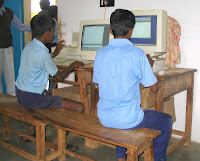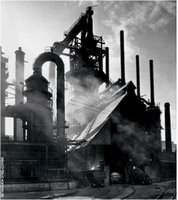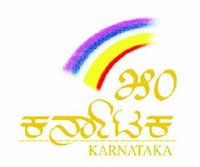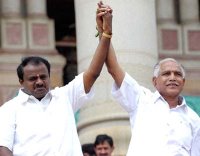The Vision Behind the Awards
Our visit to the Government Model Primary School and Pearl Valley Resort on Saturday was at the invitation of Sai Prakash. Sai is an accomplished business professional who is wise from a  combination of advanced education, life experiences and wide travels. His achievements have provided him a comfortable life. What more could be desired? The answer to that question unfolded as we discovered Sai’s inner heart’s desire to share his gifts.
combination of advanced education, life experiences and wide travels. His achievements have provided him a comfortable life. What more could be desired? The answer to that question unfolded as we discovered Sai’s inner heart’s desire to share his gifts.
We first met Sai in early October when we attended an interfaith service at the Ashirad. As Unitarian Universalists (UU’s), we are on a  spiritual quest. Armed only with our religious principles and faith in the rewards of a free and responsible search for truth and meaning, we mingle here among those steeped in Hinduism and Islam.
spiritual quest. Armed only with our religious principles and faith in the rewards of a free and responsible search for truth and meaning, we mingle here among those steeped in Hinduism and Islam.
That meeting in October at the Ashirad was a continuation of our religious odyssey in India. We have visited temples, churches, evangelical hand-clapping meetings, sought invitations to mosques, but not until that Sunday afternoon in October did we find people, like ourselves, who had ventured on a road less traveled. The people there discussed how we could make the world a better place and bring greater harmony to our communities. We had met fellow UU’s. Business cards were exchanged between Sai and Jay, as well as promises to keep in touch.
A month later we were driving on the muddy, winding  roads south of Bangalore to Anekal to visit the primary school and Pearl Valley Resort. Pearl Valley was an earlier vision to create an economically viable spa and resort among the small villages and cultivated teak forests. That vision failed. Opportunism replaced the vision and Pearl Valley became seedy and the venue for alcohol consumption, gambling and prostitution. Sai and personal friends purchased the closed grounds of Pearl Valley.
roads south of Bangalore to Anekal to visit the primary school and Pearl Valley Resort. Pearl Valley was an earlier vision to create an economically viable spa and resort among the small villages and cultivated teak forests. That vision failed. Opportunism replaced the vision and Pearl Valley became seedy and the venue for alcohol consumption, gambling and prostitution. Sai and personal friends purchased the closed grounds of Pearl Valley.
Their vision is to be economically viable, but more importantly, to transform Pearl Valley into a center of learning and hope among the people living and working in the villages and teak forests. It is here where community events could be held to bring aspiration to children who see far more alcoholism and dreariness than they should. On this  Saturday, just a few weeks after the purchase of Pearl Valley, an award ceremony was held and trophies distributed for competitions held the day before. The children competed in events like leap frog, races, odd-even counting…simple challenges…small steps to begin the longer journey.
Saturday, just a few weeks after the purchase of Pearl Valley, an award ceremony was held and trophies distributed for competitions held the day before. The children competed in events like leap frog, races, odd-even counting…simple challenges…small steps to begin the longer journey.
We reacquainted ourselves with Bob Hoekstra, a former seven-year resident in Bangalore from Holland and fellow guest at last year’s Thanksgiving dinner. Bob is one of Sai’s generous backers. After the ceremony, we ate lunch and then there was a group discussion with some of the village leaders on how to solve the problem of providing transportation for village students to attend high school.
guest at last year’s Thanksgiving dinner. Bob is one of Sai’s generous backers. After the ceremony, we ate lunch and then there was a group discussion with some of the village leaders on how to solve the problem of providing transportation for village students to attend high school.
 We shared with Sai the vision fellow UU’s held in their hearts long ago when they purchased an old decaying summer camp on a mountain top in North Carolina. Their dream was to be economically viable, but more importantly, to provide a venue for hope, learning and community. The Mountain has been that center for 30 years. It is where we, Jay and Helen, first met that started a six year journey to our eventual marriage.
We shared with Sai the vision fellow UU’s held in their hearts long ago when they purchased an old decaying summer camp on a mountain top in North Carolina. Their dream was to be economically viable, but more importantly, to provide a venue for hope, learning and community. The Mountain has been that center for 30 years. It is where we, Jay and Helen, first met that started a six year journey to our eventual marriage.
 It is wonderful to know another visionary who will leave a lasting legacy to many he will never meet.
It is wonderful to know another visionary who will leave a lasting legacy to many he will never meet.
Labels: Vision behind the Awards





 We shared with Sai the vision fellow UU’s held in their hearts long ago when they purchased an old decaying summer camp on a mountain top in
We shared with Sai the vision fellow UU’s held in their hearts long ago when they purchased an old decaying summer camp on a mountain top in 




























